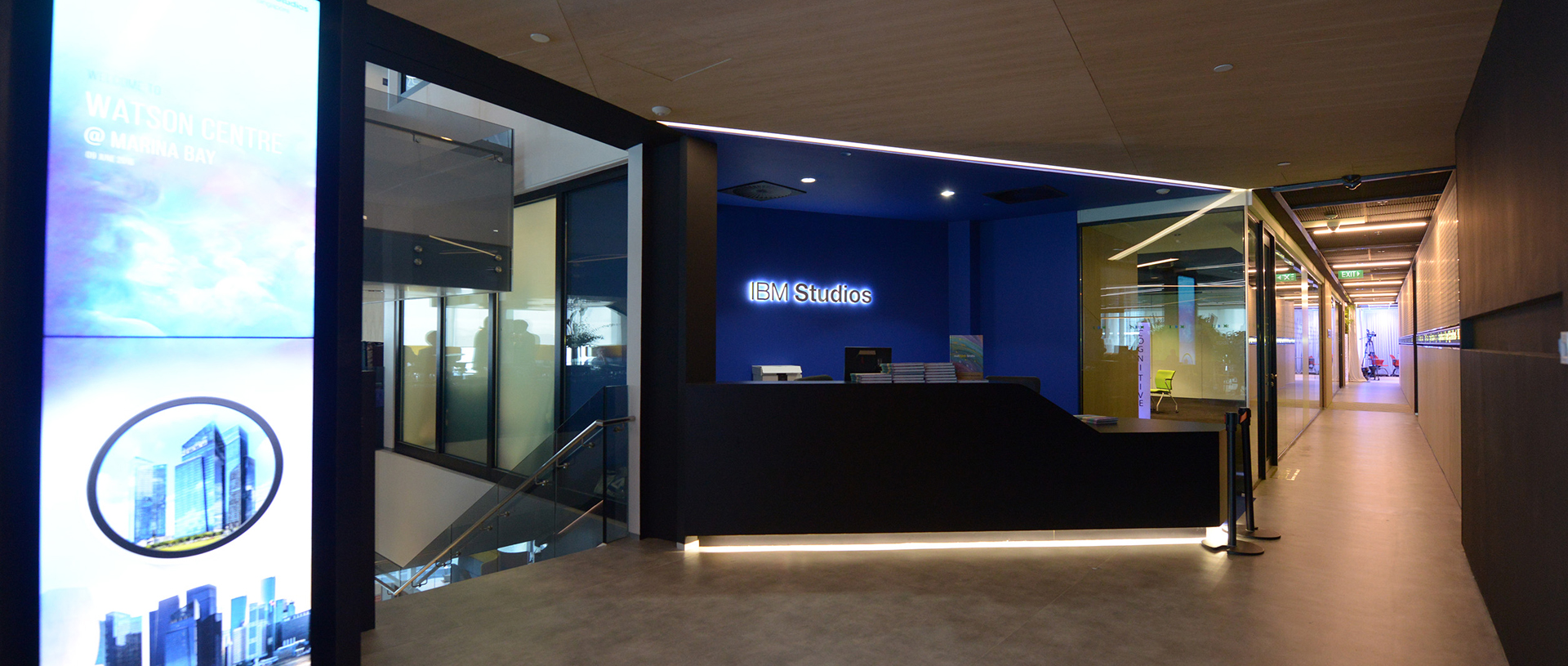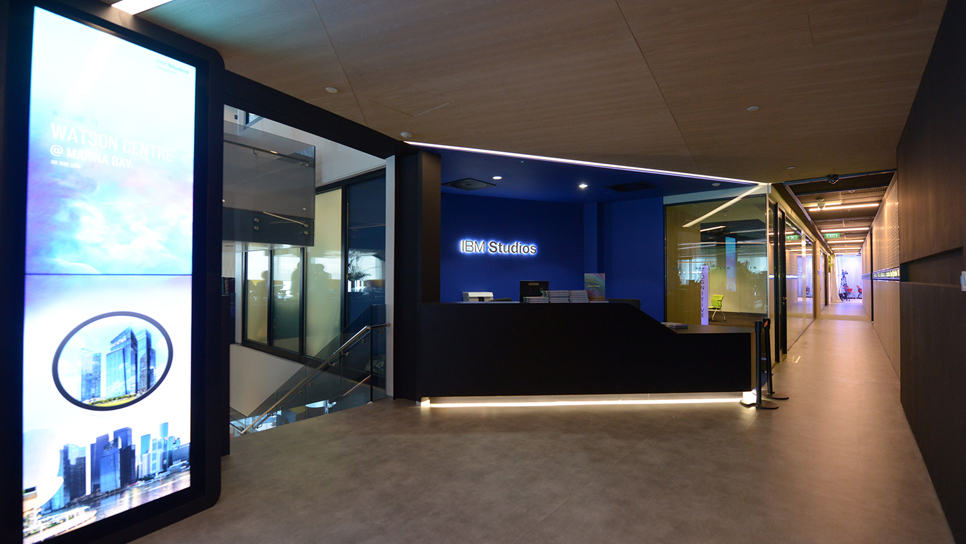Elaborating on the role that Singapore plays in IBM’s innovation efforts, Thomas says: “Not only do we have access to talent in Singapore, it is easier to bring people into the city when we cannot find the talent. Also, the strong government support, infrastructure and the rule of law that allows us to patent inventions – these are all advantages for IBM.”
Singapore has also been central to Medtronic’s innovation strategy. White says: “We are pleased to call Singapore the home of our APAC headquarters, and it provides a favourable business environment from which we can fully leverage the developed infrastructure, world class healthcare systems, technology advancements, open business policies, and skilled workforce to transform healthcare.”
Medtronic’s strategy is in line with Singapore’s integrated care approach to provide good and affordable healthcare, and to specifically tackle the challenges of an ageing population and rising chronic diseases.
White adds, “We signed two MOUs in Singapore – one with the National Neuroscience Institute to establish a Centre of Excellence for Deep Brain Stimulation to advance treatment for patients with Parkinson’s disease, and another with SingHealth to set up a Centre of Excellence on diabetes treatment and management in Southeast Asia.”
In addition, the country is home to Medtronic’s Centre of Excellence for Business Model Innovation, which is developing new approaches to healthcare through innovative partnerships.
White explains: “We do so by partnering with healthcare providers to offer and equip them with skills and knowledge, and to deliver our expertise and information about medical conditions and treatment options to patients.
“In communities and markets where the disparity between healthcare needs and access is greatest, we believe that our new and innovative business models can help bridge the gap.”
Translating innovation into tangible results
Naturally, all these initiatives can be defined as successful only when they lead to tangible business outcomes.
Through its innovative partnerships in Singapore, Medtronic has gained access to a wider and faster market for its products. Such collaborations have also enabled Medtronic to lock-in customers with better service, offering them a more holistic relationship.
White revealed that Medtronic’s Centre of Excellence for Business Model Innovation is seeing positive results so far. Since its inception, it has “incubated and commercialised disease management solutions for diseases including heart failure, type 2 diabetes, lung cancer and trauma,” he says.
For instance, Medtronic’s Smiling Hearts is a heart failure specialty clinic that addresses multiple challenges by providing standardised clinical protocols and guidelines, patient data reporting and analysis for therapy optimisation as well as patient education and management.
In the last two years, six clinics have been established in India, benefitting more than 3,900 patients. Based on this success, this model of care is now being introduced in Southeast Asia and Bangladesh.
IBM is making headway with its collaborative efforts too. One year after launching the IBM Center for Blockchain Innovation, it signed an MOU with Pacific International Lines and PSA International to explore the potential of blockchain technologies for more efficient and secure supply chain solutions across Asia.
During the 2016 Singapore FinTech Festival, the company also announced a blockchain project with fintech startup KYCK! to help financial services providers address their Know Your Customer requirements in a more streamlined way.
Partnering with start-ups leads to a win-win outcome for both IBM and smaller players, explains Thomas. Budding entrepreneurs enjoy funding, mentoring and the widespread network of the Big Blue, while IBM gets to infuse its technologies into solutions, earning licensing revenue in the process. IBM then gains a first-mover advantage as a result.
“If the start-up becomes successful, they would then take IBM products along with the solution to other corporate clients. This way, we get to shut off our competitors from this segment of the marketplace,” he says.
Driving transformation through collaborative innovation
Perhaps more significantly, striking up strategic partnerships has the potential to fundamentally transform businesses and alter customer relationships.
By collaborating with healthcare providers, Medtronic can now offer customised services and solutions, going beyond just sharing a ‘device’ relationship with its clients.
“It is about partnering with hospitals and healthcare systems to develop tailored services and solutions designed to improve clinical, operational and financial outcomes. For example, this involves helping them optimise a catheterisation lab or an operating theatre,” says White.
Specifically in the context of Singapore, he explains: “In terms of the intelligent operating rooms (OR), Medtronic is actively working with key hospitals in Singapore to bring in our Robotic surgical platform which can lower the cost of robotic surgery in future. We are also partnering with another hospital in Singapore to link our OR purchases and inventory to improve cost and stock efficiencies.”
By investing in new collaborative facilities such as the IBM Centre for Blockchain Innovation and The Watson Centre at Marina Bay, IBM has also demonstrated its pivot from a hardware provider that helps businesses to keep the lights on to an enabler of innovation across industries, thanks to its expertise in technologies such as blockchain and cognitive computing.
Thomas shares that IBM has become more outward-focused over time. “In the earlier days, because we were such a prolific innovation and invention company, we did more things just by ourselves. But over time, we have realised that other organisations also have a lot of good ideas and capabilities. With the onset of the digital transformation era, we know that contextual and client-related inventions need to happen,” he says.
In this new reality where companies are pushing the envelope through new forms of innovation, multinationals such as IBM and Medtronic are finding that Singapore’s thriving ecosystem offers a favourable environment to forge valuable partnerships.
The confluence of factors such as intellectual capital, robust infrastructure, political stability and open, transparent business policies has positioned the city as a strategic collaboration hub, allowing leading companies to take advantage of all that Asia has to offer.
For more on how Asia is helping to drive innovation, read Asia: The Face of Innovation, a white paper by the Harvard Business Review Analytic Services.









